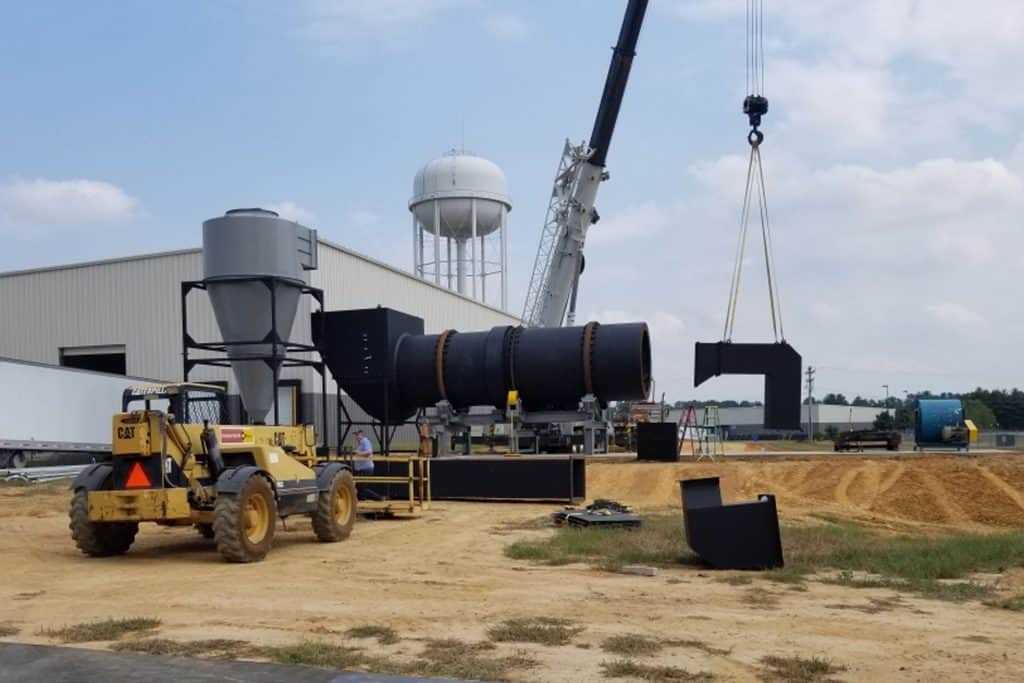The expenses to consider when purchasing a Thermal Desorption Unit.
The primary cost of purchasing and running an indirect heated thermal desorption unit is based on the material being dried (tons per hour, required temperature, if caustic or not, etc.), the chosen fuel type for the burners (No. 2 fuel oil, natural gas), and operating utilities (electric, water). The material being dried is the biggest factor in price as it dictates the overall sizing and build material of the unit.
The major factors of the material that dictate the sizing of the unit are the production rate (tons per hour), bulk density (lb/ft3), and chemical makeup. The production rate and bulk density go hand in hand with determining the size of the diameter of the drying drum. Higher tonnages combined with lighter material requires the drum diameter to be larger to account for appropriate fill (<20%). The chemical makeup affects the sizing of the dryer, pipelines, thermal oxidizer (if needed), burners, and other equipment (ID fan, blowers, scrubbers, etc.) based on required residence time, temperature, heat capacity, and the amount of non-desirable components in the material. Longer residence times typically cause the dryer to be longer due to problems of material slumping that occur at low RPMs. Higher desired temperatures, and higher heat capacities, require larger burners to meet energy needs in the material. Larger amounts of non-desirable components (water, oil, contaminants, etc.) generates larger vapor flow rate leaving the dryer, leading to larger pipe sizes, scrubbers, liquid flow rates in the scrubbers, pumps, motors, and so on. The chemical makeup also determines the building material of the unit.
The chemical makeup of the product being treated determines the building material by determining whether it is caustic and the required temperature it must be treated at. The typical building materials Vulcan® Drying Systems uses are stainless steel and Inconel. Other materials can be used to meet higher temperature requirements if necessary. Carbon steel is used for non-caustic (non-corrosive) material with lower temperature requirements while 304 SS is used for caustic material with/without high temperatures. The stainless steel protects against corrosion from the material, and the environment, which allows for a longer equipment life expectancy.
The operating costs of the indirect heated thermal desorption unit are burner fuel, operation utilities, and maintenance. The fuel required depends on the size of the unit and will be estimated by Vulcan® Drying Systems within the quote. Operation utilities will generally be electric and water costs. Again, these depend on the size of the unit but can be estimated by the information given in any Vulcan® Drying Systems quote.




